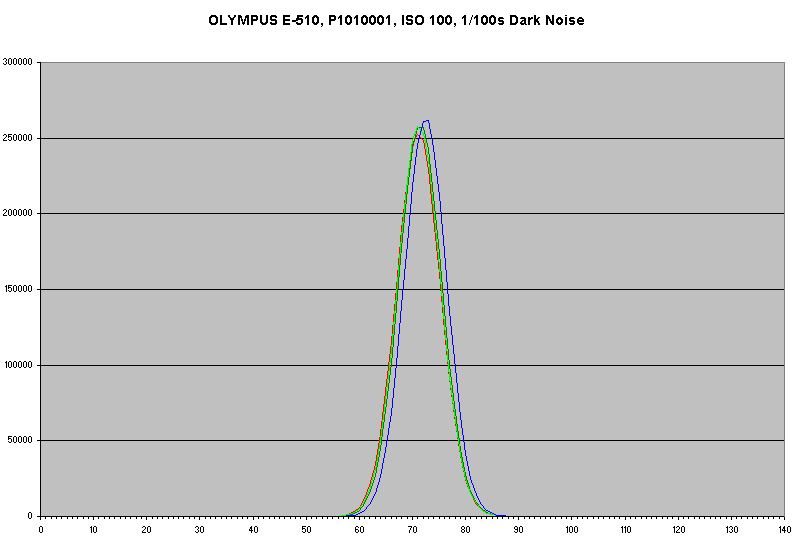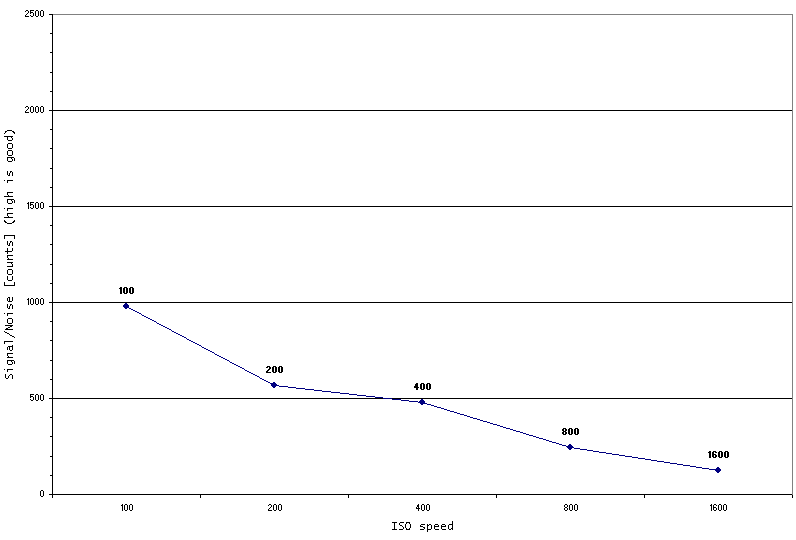Olympus E-510 Dark Noise Tests
This page allows you to view raw histograms of dark frames shot at 1/100s with all possible ISO settings of the Olympus E-510. Move your mouse over the list of ISO sensitivities on the left to view the corresponding histogram. You can get the original file (csv) with the histogram data by clicking the link. If you want to know how these were made see the original rawhistogram page.
To their credit the Olympus engineers left the raw data untouched (apparently) - unlike for example Nikon and Minolta who seem to subtract the dark level in the firmware an thus "ruin" the raw data and "hide" some (half of) the noise. For the E-510 the dark level is 71 counts, which allows us to see the full gaussian curves below and accurately measure the read out noise. Notice though that at ISO 1600 the spread becomes large enough that some pixels start to "pile up" at zero. This is exactly what happens on Nikon and Minolta cameras to half(!) of the pixels! Canon on the other hand - like Olympus leave the raw data (mostly) untouched.

The graph below represents the signal/noise ratio as a function of ISO speed. If you prefer dB units to "counts" move your mouse over the image. Since this is a ratio of maximum signal to dark noise it essentially represents the dynamic range of the camera. Keep in mind that there are other sources of noise in addition to the dark noise measured here. A Google query should give you some quite good introductory information. As far as the read out (dark) noise of the E-510 is concerned - it is fairly high (not good). Compared for example to it's direct competition - the Canon EOS 400D (Digital Rebel XTi) all but ISO 100 are worse then ISO 800 on the EOS 400D! And ISO 100 on the Olympus is barely better then ISO 800 on the Canon! The scale of the "counts" graphs of the two cameras is the same so you can easily compare.

The values were calculated as follows:
SNcounts = (2^14 - Mean)/Sd
SNdB = 20 * log(SNcounts)
Where "Mean" is the mean of the histogram (around 71 for all ISOs) and "Sd" is the standard deviation - which is what increases with noise.
Copyright © 2008 Peter Ruevski. All rights reserved.
Last modified 2008-02-14